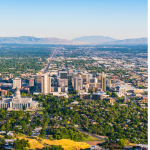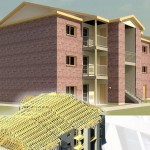 In the intricate web of urban planning and infrastructure development, the domain of traffic engineering stands as a crucial pillar. As cities evolve and populations grow, ensuring the safety and efficiency of road networks becomes paramount. In this comprehensive exploration, we delve into the strategies and innovations that define modern traffic engineering, unraveling the complexities of road safety and the pivotal role it plays in shaping our daily commutes. Join us on this journey through the lanes of traffic engineering expertise, and discover the keys to safer roads.
In the intricate web of urban planning and infrastructure development, the domain of traffic engineering stands as a crucial pillar. As cities evolve and populations grow, ensuring the safety and efficiency of road networks becomes paramount. In this comprehensive exploration, we delve into the strategies and innovations that define modern traffic engineering, unraveling the complexities of road safety and the pivotal role it plays in shaping our daily commutes. Join us on this journey through the lanes of traffic engineering expertise, and discover the keys to safer roads.
Understanding the landscape of traffic engineering:
- The dynamics of traffic flow:
- Traffic engineering involves the study and optimization of the movement of vehicles, pedestrians, and cyclists on roadways. It aims to strike a delicate balance between mobility, safety, and environmental considerations.
- Challenges in modern traffic engineering:
- Rapid urbanization, increased vehicular density, and evolving transportation modes pose challenges to traffic engineers. Addressing these challenges requires innovative solutions that consider both current needs and future growth.
Strategies for safer roads:
- Intelligent Traffic Management Systems (ITMS):
- The integration of Intelligent Traffic Management Systems (ITMS) represents a significant stride in enhancing road safety. Real-time monitoring, adaptive signal control, and predictive analytics contribute to the efficient flow of traffic and reduce the likelihood of accidents.
- Smart intersection design:
- Traffic engineers focus on designing intersections that minimize conflict points and prioritize pedestrian safety. Features such as protected left-turn lanes, signal phasing adjustments, and dedicated pedestrian crossing times contribute to safer intersections.
- Pedestrian and cyclist-friendly infrastructure:
- The modern approach to traffic engineering recognizes the importance of creating infrastructure that accommodates all road users. Designing pedestrian-friendly sidewalks, designated bike lanes, and crosswalks enhances safety for vulnerable road users.
Technological advancements in traffic engineering:
- Connected and Autonomous Vehicles (CAVs):
- The rise of CAVs introduces a new dimension to traffic engineering. Engineers are exploring ways to integrate these vehicles into existing traffic systems, ensuring a seamless coexistence between traditional and autonomous modes of transportation.
- Data-driven decision-making:
- Leveraging data is at the heart of contemporary traffic engineering. Advanced analytics and machine learning algorithms process vast amounts of data from sensors, cameras, and other sources to inform decision-making, allowing for proactive interventions to prevent congestion and enhance safety.
Community engagement and education:
- Public awareness campaigns:
- Engaging with the community through awareness campaigns plays a crucial role in promoting safer road behaviors. Education on the importance of adhering to speed limits, avoiding distractions, and respecting traffic signals fosters a culture of responsible road use.
- Collaboration with local authorities:
- Traffic engineers collaborate closely with local authorities to understand the unique challenges of specific communities. Tailoring solutions to local needs ensures that road safety measures are effective and well-received by the community.
Integration of sustainable practices:
- Green infrastructure implementation:
- Traffic engineering is evolving to incorporate sustainable practices that not only enhance safety but also contribute to environmental conservation. The integration of green infrastructure elements, such as permeable pavements and eco-friendly road materials, aligns traffic engineering with broader sustainability goals.
- Emission reduction strategies:
- In response to the global push for reduced carbon emissions, traffic engineers are exploring strategies to minimize the environmental impact of road transportation. Initiatives include the promotion of electric vehicles, the development of alternative transportation modes, and the optimization of traffic flow to reduce fuel consumption.
Resilience in the face of changing climates:
- Adaptive infrastructure design:
- Traffic engineering embraces resilience by designing infrastructure capable of withstanding the impacts of climate change. This includes considerations for extreme weather events, rising sea levels, and temperature fluctuations, ensuring that road networks remain operational and safe in the face of environmental challenges.
- Flood-resilient roadways:
- With a growing awareness of climate-related challenges, traffic engineers are incorporating flood-resilient designs for roadways. Elevated road structures, improved drainage systems, and strategic planning help mitigate the impact of flooding, safeguarding communities against climate-induced disruptions.
Human-centric design principles:
- Universal accessibility:
- The principles of universal design are gaining prominence in traffic engineering, emphasizing infrastructure that is accessible to all, including individuals with disabilities. Ramps, tactile indicators, and audible signals contribute to creating inclusive road environments, fostering a sense of safety and community.
- Psychological considerations:
- Traffic engineers recognize the psychological impact of road design on drivers and pedestrians. Calming measures, aesthetic enhancements, and well-planned landscapes contribute to a positive and stress-free road experience, enhancing overall safety.
Inclusive urban planning:
- Transit-Oriented Development (TOD):
- Traffic engineering aligns with urban planning strategies that prioritize transit-oriented development. By creating well-connected networks that seamlessly integrate public transportation, traffic engineers contribute to reducing reliance on private vehicles and mitigating congestion.
- Mixed-use zoning:
- Encouraging mixed-use zoning in urban planning promotes the creation of walkable communities. Traffic engineers play a vital role in designing road networks that accommodate pedestrian traffic and support vibrant, mixed-use urban spaces.
As a leader in comprehensive design services, McNeil Engineering stands as a beacon of expertise in engineering. Our commitment to delivering timely, responsive, and economical design solutions aligns seamlessly with the strategies outlined for safer roads.
Navigating Safer Roads with McNeil Engineering
Embark on a journey towards safer roads with McNeil Engineering. Whether you are a municipality seeking to enhance traffic flow, a developer planning a new infrastructure project, or a community striving for safer road environments, McNeil Engineering is your trusted partner. Connect with McNeil Engineering today and experience the intersection of innovation and safety in engineering.
Visit McNeil Engineering to explore our comprehensive design services, including civil engineering, structural engineering, land surveying, high-definition scanning (HDS), landscape architecture, and consulting.








